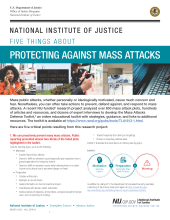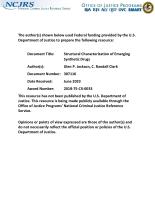Assault
Five Things About Protecting Against Mass Attacks
A 28-year longitudinal study of victimization and perpetration of violence in high-risk youth: Advancing the development of preventive interventions in the community
Identifying reliable ions for the statistical differentiation of structurally similar fentanyl analogs
Metonitazene Begins Proliferation as Newest Synthetic Opioid Among Latest Cycle of Non-Fentanyl Related Drugs
Bromazolam Prevalence Surging Across the United States Driven In Part by Increasing Detections Alongside Fentanyl
Can Science Enhance Equity? Findings and Implications From a Study To Detect Bruising on Victims with Dark Skin Pigmentation
This plenary panel from the 2023 NIJ Research Conference features fascinating research on a methodology to improve the detection and documentation of bruises on victims of violence who have dark skin pigmentation. This study highlights the intersection between science, justice, and racial equity, featuring practitioner and victims’ advocacy perspectives. The discussion describes the research and its findings and explore strategies to ensure that this particular evidence-based methodology can be widely implemented by nurse practitioners in the field.
Participants:
See the YouTube Terms of Service and Google Privacy Policy





